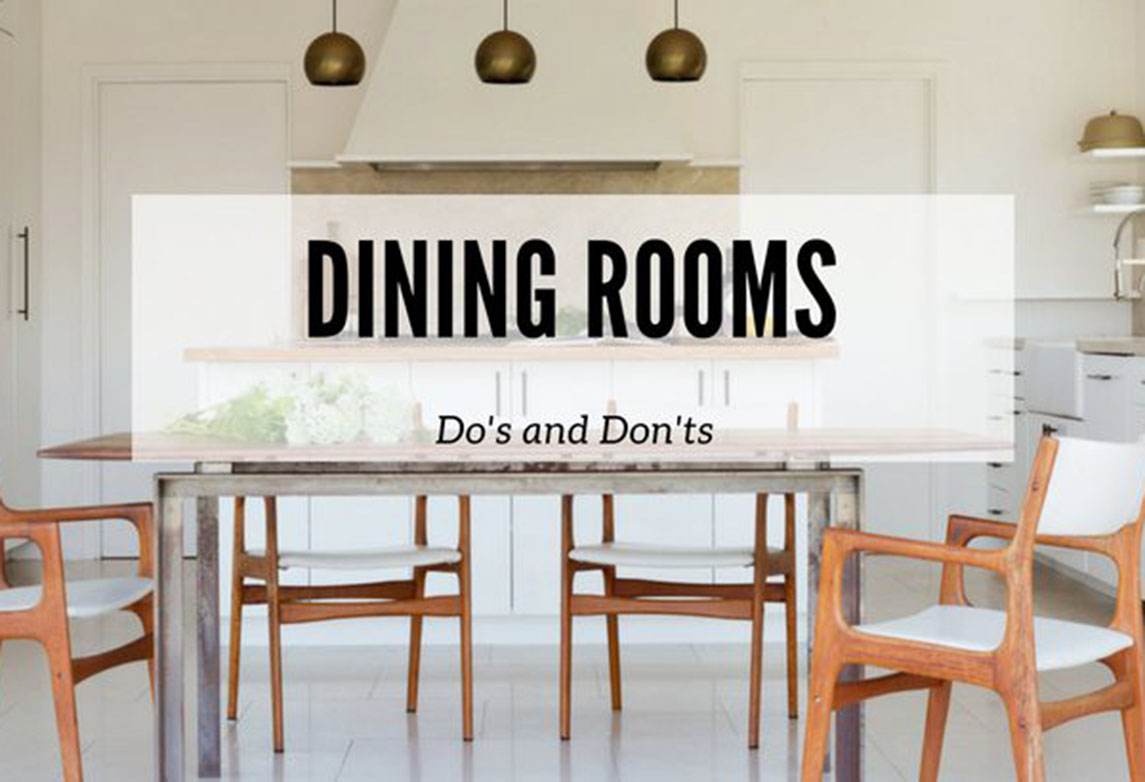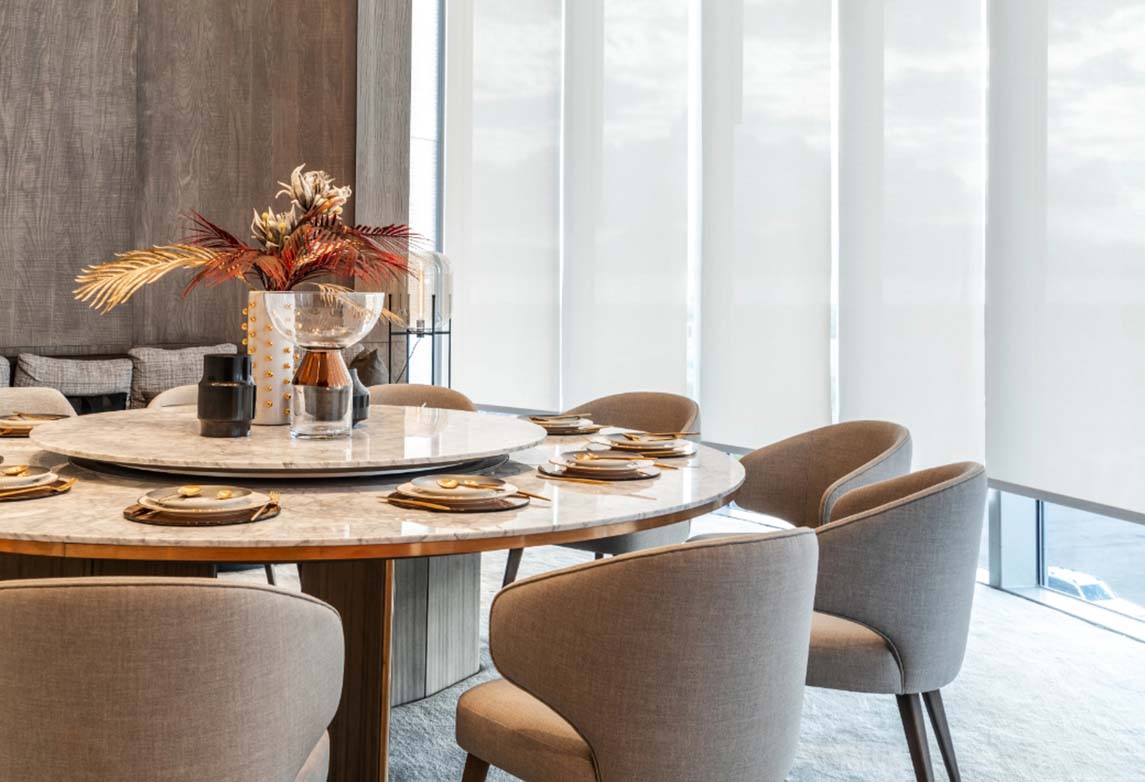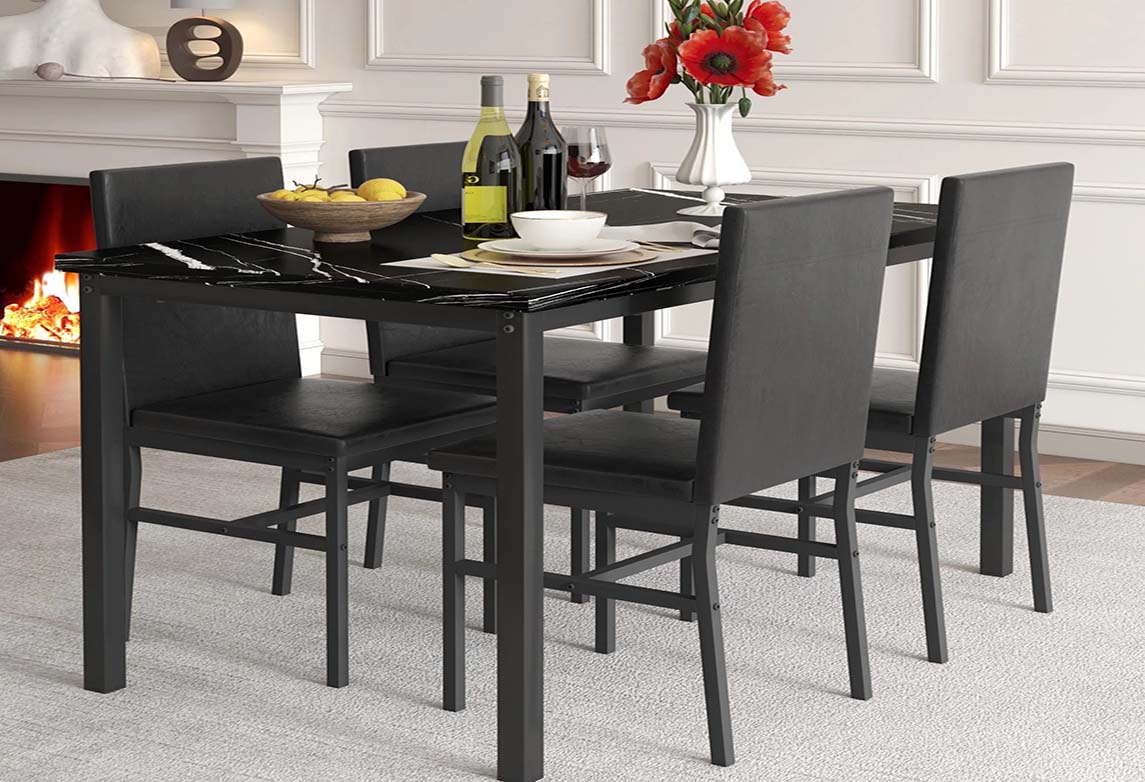When it comes to designing a dining room, whether you’re starting from scratch or updating an existing space, the process can be both exciting and daunting. The dining room is often the heart of a home—a place where family and friends gather to share meals, celebrate special occasions, and create lasting memories. Because of this, getting the design just right is crucial. However, there are common mistakes that many people make when designing their dining rooms. In this article, we’ll explore the essential dos and don’ts to help you avoid these pitfalls and create a dining space that is both functional and aesthetically pleasing.
1. DO: Plan Your Space Carefully
One of the most important steps in designing a dining room is proper space planning. Before purchasing any furniture or decor, take the time to measure your dining area and consider how the space will be used.
- Measure the Room: Start by measuring the dimensions of your dining room, including the ceiling height. Knowing the exact size of the space will help you choose the right furniture pieces and avoid overcrowding.
- Consider Traffic Flow: Ensure there’s enough space for people to move comfortably around the table and chairs. A good rule of thumb is to leave at least 36 inches between the edge of the table and the walls or other furniture.
- Plan for Storage: If your dining room doubles as a storage space, plan for cabinets or buffets that can store dishes, glassware, and table linens.
2. DON’T: Ignore the Proportions
A common mistake is choosing furniture that doesn’t fit the scale of the room. Oversized furniture can make a space feel cramped, while furniture that is too small can make the room feel empty and uninviting.
- Select the Right Table Size: The dining table is the focal point of the room, so it’s essential to choose one that fits the space. For smaller rooms, consider a round or oval table, which takes up less space and promotes conversation. In larger rooms, a rectangular or extendable table can work well.
- Don’t Overcrowd with Chairs: Ensure that the chairs fit comfortably around the table without touching each other. For rectangular tables, a minimum of 24 inches of space per chair is recommended.
- Consider Ceiling Height: If you have a low ceiling, avoid tall furniture or heavy chandeliers that can make the room feel cramped. For high ceilings, you can opt for taller pieces like a statement chandelier or a buffet with vertical storage.
3. DO: Pay Attention to Lighting
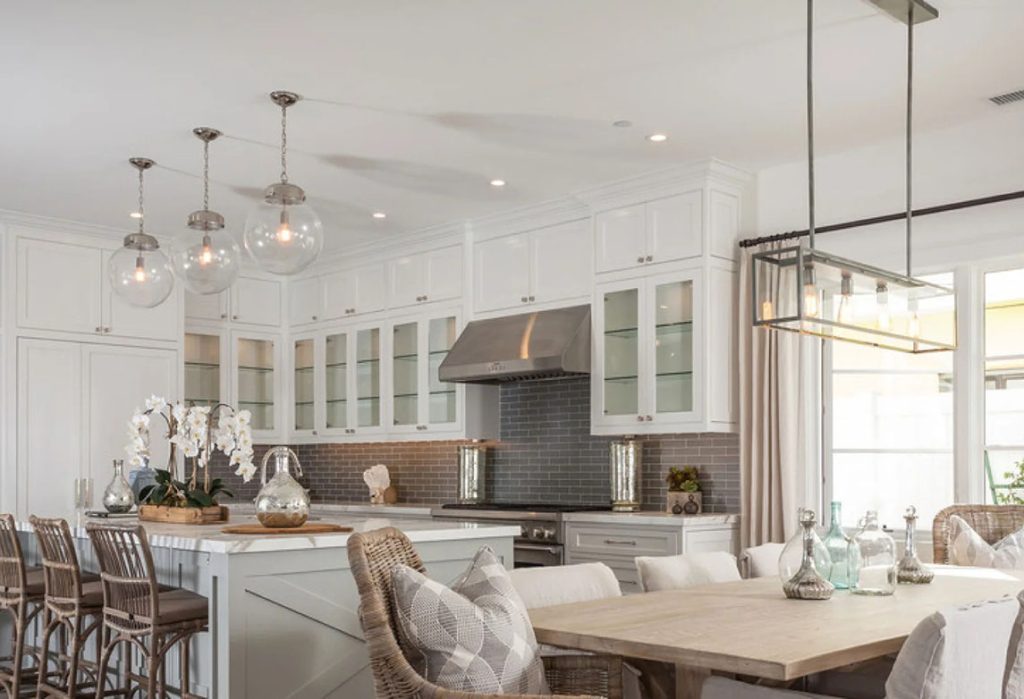
- Install a Statement Light Fixture: A chandelier or pendant light above the dining table not only provides illumination but also serves as a focal point. Ensure the fixture is proportional to the table size and hung at the correct height—typically 30 to 36 inches above the table surface.
- Add Layered Lighting: In addition to the main light fixture, consider adding wall sconces, floor lamps, or table lamps to create a warm and inviting atmosphere. Dimmer switches are also a great addition, allowing you to adjust the lighting to suit different occasions.
- Utilize Natural Light: If your dining room has windows, maximize natural light by choosing light and airy window treatments. Avoid heavy drapes that can block light and make the room feel dark.
4. DON’T: Overlook the Importance of Comfort
Comfort is key in a dining room, as guests will likely spend a significant amount of time seated around the table. Don’t sacrifice comfort for style when selecting furniture.
- Choose Comfortable Chairs: Dining chairs should be both stylish and comfortable. Look for chairs with adequate padding and support. If you choose wooden or metal chairs, consider adding cushions for extra comfort.
- Avoid Hard or Cold Materials: Materials like glass or metal can feel cold and uninviting. Incorporate softer materials such as upholstered chairs, a plush rug, or curtains to add warmth and comfort to the space.
- Think About Ergonomics: The height of the chairs and table should complement each other. Standard dining tables are about 28 to 30 inches high, so chairs should have a seat height of around 18 inches for optimal comfort.
5. DO: Create a Cohesive Design
A cohesive design is essential to creating a harmonious and visually appealing dining room. This means carefully considering color schemes, materials, and decor elements to ensure everything works together.
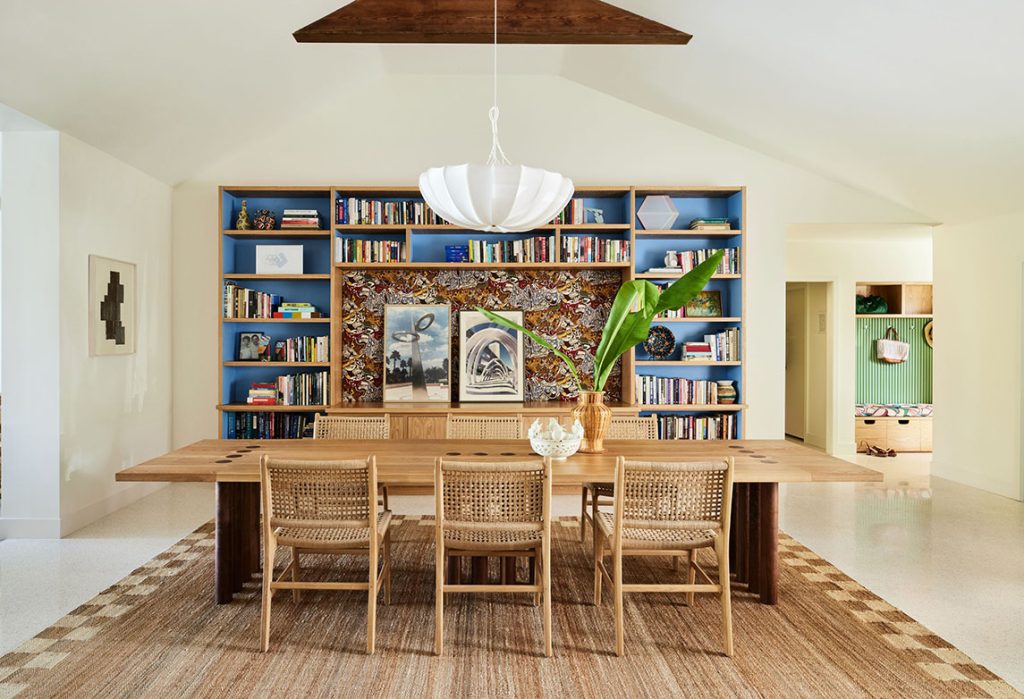
- Choose a Consistent Color Palette: Start by choosing a color palette that reflects the mood you want to create. Neutral tones like beige, gray, or white create a calm and timeless look, while bolder colors like navy or emerald green can add drama and sophistication.
- Mix Materials Thoughtfully: While it’s okay to mix different materials, do so thoughtfully. For example, pairing a wooden dining table with metal chairs can create an interesting contrast, but avoid mixing too many different materials as it can make the space feel disjointed.
- Use Art and Accessories: Incorporate artwork, mirrors, and accessories that complement your design. A large mirror can make the room feel more spacious, while a well-chosen piece of art can add personality and character.
6. DON’T: Forget About Practicality
While aesthetics are important, practicality should not be overlooked. A beautiful dining room that is not functional will not serve you well in the long run.
- Choose Durable Materials: Dining rooms are high-traffic areas, so opt for durable materials that can withstand wear and tear. For example, a hardwood dining table is more durable than a glass one, and performance fabrics on chairs are easier to clean than delicate fabrics.
- Consider Maintenance: Think about the maintenance requirements of your furniture and decor. Materials like wood and leather require regular upkeep, while glass and metal may show fingerprints and smudges more easily.
- Plan for Flexibility: If you entertain often, consider a table with leaves that can be extended to accommodate more guests. Stackable or foldable chairs are also a good option for providing extra seating without taking up too much space.
7. DO: Pay Attention to Flooring
The right flooring can tie the entire room together and enhance the overall aesthetic of your dining room. It’s important to choose flooring that is both beautiful and functional.

- Opt for Durable Flooring: Dining rooms are prone to spills and heavy foot traffic, so choose a durable flooring material like hardwood, tile, or luxury vinyl. These materials are easy to clean and maintain, making them ideal for dining areas.
- Add a Rug for Warmth: A rug can add warmth and texture to the dining room, as well as define the space. When choosing a rug, ensure it’s large enough to accommodate the table and chairs. The rug should extend at least 24 inches beyond the edges of the table to allow chairs to be pulled out without falling off the rug.
- Consider Pattern and Color: If your dining room is neutral, a patterned rug can add visual interest and anchor the space. Conversely, if your dining room is already bold, opt for a more subtle rug that complements the overall design.
8. DON’T: Neglect Personal Touches
Your dining room should reflect your personal style and taste. While it’s important to follow design principles, don’t be afraid to add personal touches that make the space uniquely yours.
- Incorporate Family Heirlooms: If you have family heirlooms or vintage pieces, consider incorporating them into your dining room design. A vintage sideboard or antique dining table can add character and a sense of history to the space.
- Display Personal Art or Photos: Personalize your dining room with art or photos that have special meaning to you. A gallery wall of family photos or travel memories can create a warm and inviting atmosphere.
- Choose Decor That Resonates with You: Whether it’s a collection of pottery, a unique centerpiece, or a set of handmade candles, choose decor items that resonate with you and enhance the dining experience.
9. DO: Consider Functionality for Entertaining
If you love to entertain, it’s important to design your dining room with functionality in mind. A well-designed dining room can make hosting dinner parties and gatherings more enjoyable.
- Invest in a Versatile Dining Table: A table with extendable leaves is ideal for accommodating more guests when needed. Round tables are great for smaller gatherings and facilitate conversation, while rectangular tables work well for larger groups.
- Create a Beverage Station: If you entertain often, consider adding a beverage station or bar cart to your dining room. This allows guests to serve themselves and keeps the dining table clear of clutter.
- Ensure Adequate Seating: Make sure you have enough seating for your guests. If you have a small dining room, consider using benches or banquettes that can seat more people in a compact space.
10. DON’T: Forget About Storage Solutions
Storage is often an afterthought in dining room design, but it’s essential for keeping the space organized and clutter-free.
- Add a Buffet or Sideboard: A buffet or sideboard is a practical addition to any dining room, providing storage for dishes, glassware, and linens. It also offers a surface for serving food or displaying decor.
- Utilize Built-In Storage: If space allows, built-in cabinets or shelves can provide ample storage without taking up additional floor space. They can also be customized to match the overall design of the room.
- Consider Multi-Functional Furniture: In smaller dining rooms, consider furniture that serves multiple purposes, such as a dining table with built-in storage or a bench with hidden compartments.
Designing a dining room requires careful consideration of both form and function. By following these dos and don’ts, you can create a space that is not only beautiful and comfortable but also practical and functional. Remember to plan your space carefully, choose the right proportions, pay attention to lighting, and prioritize comfort. Don’t forget to add personal touches and create a cohesive design that reflects your style.
